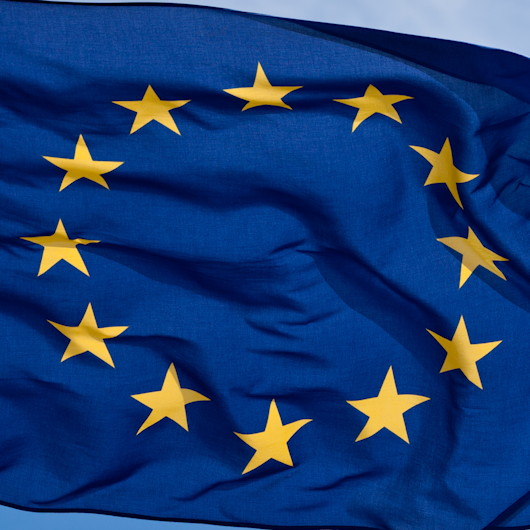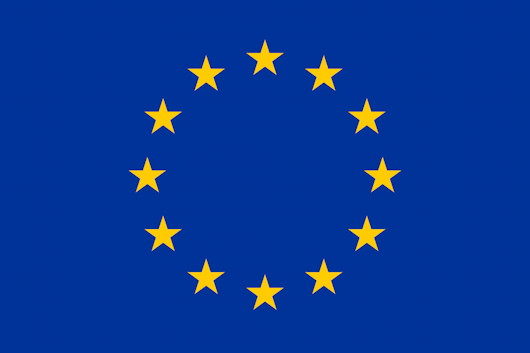
About Andrew Cusack
 Writer, web designer, etc.; born in New York; educated in Argentina, Scotland, and South Africa; now based in London.
Writer, web designer, etc.; born in New York; educated in Argentina, Scotland, and South Africa; now based in London. read more
News
Blogs
Reviews & Periodicals
Arts & Design
World
France
Mitteleuropa
Knickerbockers
Argentina
The Levant
Africa
Cape of Good Hope
Netherlands
Scandinavia
Québec
India
Muscovy
Germany
Academica

Following the horrors of the Second World War, there was a concerted effort to re-Christianise Europe, to ensure that the horrors inflicted by nationalist and Marxist socialism would never be repeated. For a time, statesmen like Konrad Adenauer in Germany and Alcide de Gasperi in Italy actually had remarkable success in promoting a Christian Democracy in which the sovereignty of Almighty God and the sanctity of human life, which carries the Image of God, were considered sacrosanct.
On the Feast of the Immaculate Conception 1955, the new flag of the European Union was inaugurated, emblazoned with twelve stars on a blue background. Its designer, Arsène Heitz, later disclosed that the stars represent the halo seen in images of Our Lady. After his first design incorporating the Cross had been rejected as too overtly Christian, Heitz was happy to take his inspiration from a picture of the Immaculate Conception.
At that time, there seemed to be so much promise for a Christian future in Europe — a future in which all human life at every stage of its existence, from conception to death, would be considered sacred and inviolable, thanks to that indelible Image of God emblazoned on every human soul.
— Fr Julian Large, Cong. Orat.
So preached the Provost of the London Oratory during a stirring sermon to, as usual, a packed church one Sunday in 2013.
Of course, as Fr Julian correctly continued, “then something seemed to go badly wrong”, but it would take a volume to transcribe the numerous missteps and mistakes in the process of attempting European political unity.
Still, one would need to be blind not to acknowledge some of its accomplishments, among which I would count the European flag the genesis of which Fr Julian describes. The design is both simple and dignified which is amply attested to by the ease with which it has been deployed to myriad purposes.
While later adopted and used by the European Union (and its predecessors, the EEC and EC) it was actually created earlier in 1955 by an entirely separate organisation, the Council of Europe. The Strasbourg-based body still holds the copyright to the European flag and includes among its members many parts of Europe and beyond that are not part of the EU, viz. Russia, Denmark’s Greenland, Turkey, and parts of the Caucasus.
As Great Britain’s membership of the European Union draws to a close, it is some reassurance that we can still claim the European flag as our own, not just vaguely as a European country, but even legally as a Council of Europe member state. Just as one mustn’t surrender the Cross of St George to be waved only by football hooligans and racists, nor must we allow the Crown of Stars to be monopolised by ‘remoaners’ with blind faith in ever-centralising and ever-more-remote institutions.
One hopes that, in time, whatever negative connotations the European flag may have had amongst some will fade into the past as Britain takes her natural place as the bridge connecting Europe and the rest of the world.

Search
Instagram: @andcusack
Click here for my Instagram photos.Most Recent Posts
- Faithful Shepherd of the Falklands April 8, 2025
- Articles of Note: 8 April 2025 April 8, 2025
- Proportionality Destroys Representation April 8, 2025
- Sag Harbor Cinema March 26, 2025
- Teutonic Takeover March 10, 2025
Most Recent Comments
Book Wishlist
Monthly Archives
Categories



It always reminds me of flags with a hole in the middle where East European patriots cut out the coat of arms of the state. Except that, in this case, the missing symbol is the Mother of God rather than a red star.
As a ‘Remainer’ -all with 48% of the voters – I much object to being guyed as a ‘Remoaner.’
Not all Remainers are Remoaners.
“his first design incorporating the Cross had been rejected as too overtly Christian”
Is that the flag currently used by the Paneuropean Union/Movement?
Andrew
Provincial of me perhaps to look for one but there is an Irish connection here – to be precise, to the Office of the Chief Herald of Ireland: http://archive.is/C4ssS.
I am having lunch with one of its heralds on Wednesday and will report back if he has anything enlightening on this.
Donal
These aren’t Our Lady’s stars, which have six points (for a daughter of King David). These ones have five points (for Solomon, and, er, other things). Moreover Paul M. G. Lévy, who finalised the design, has flatly denied the Marian connexion.
I believe that is incorrect. Baron Lévy — a convert — took Heitz’s concept and drafted the final design from it. So far as I know Baron Lévy denied only that he was aware of the Marian connection at the time.
In an interview he notes that the symbolism of the number twelve has a multitude of interpretations: as a symbol of plenty, as the signs of the zodiac, the labours of Hercules, the number of Apostles, the sons of Jacob, the months of the year, or of perfection in general.
The voiceover from the video notes that the connection to the Book of Revelation was pointed out later, and the coincidence that the design of the flag was approved a day earlier than expected, on the feast of the Immaculate Conception. (And that a crown of stars is present in the painting on the ceiling in the Barberini palace where the European Convention on Human Rights was signed in 1950.)
So while Lévy may have be unaware, there doesn’t seem to be any evidence suggesting that Heitz was not inspired by Marian symbolism.